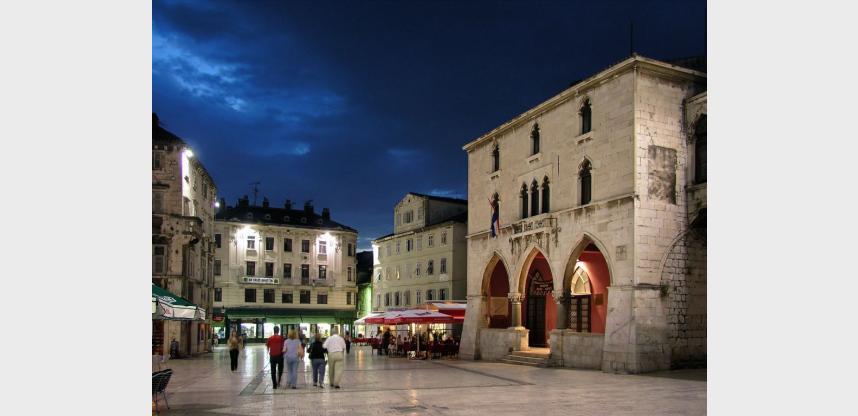Pjaca
Pjaca (People's Square, another square nobody in Split calls by its real name), is first mentioned in 13th century as St Lawrence's Square, and it was the first inhabited part of Split outside the Diocletian Palace, leaning to its western wall. Already for centuries the Pjaca is the central stage of the city life, there in the Gothic building of the Old Town Hall, today an exhibition centre, was the seat of the city's authority, and in still beautiful and preserved Palaces on the outskirts of the Pjaca lived the noble families Cambi, Pavlović, Nakić, Ciprianis, Karepić... Still open is one of the oldest book shops in the world, Morpurgo, to this day it looks almost the same as it looked in 1861, and in the Café Central where the intellectuals of Split gathered is where the tourism of Split begun with the former hotel Troccoli.
The city clock has been ticking for centuries on Pjaca, unique by his 24 instead of 12 digits, and in the surrounding cafés, restaurants and bars the citizens of Split could always find a place to rest, meet, be seen and see others, go through the most important events of the city. Every building on Pjaca has its story, each is a witness of history and the spirit of the city. As it was yesterday, it is also today, when Pjaca is filled with numerous bars, restaurants and shops, and when it became one of the most important spots for tourists wishing to enjoy in whatever it is that their hosts, citizens of Split, are enjoying.












